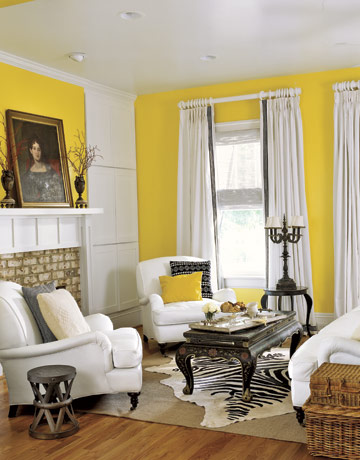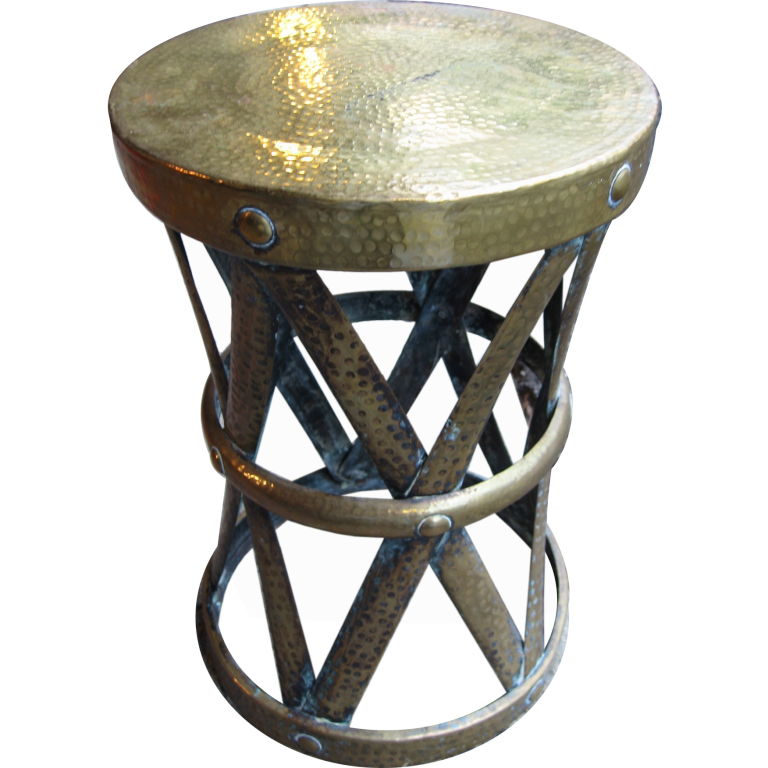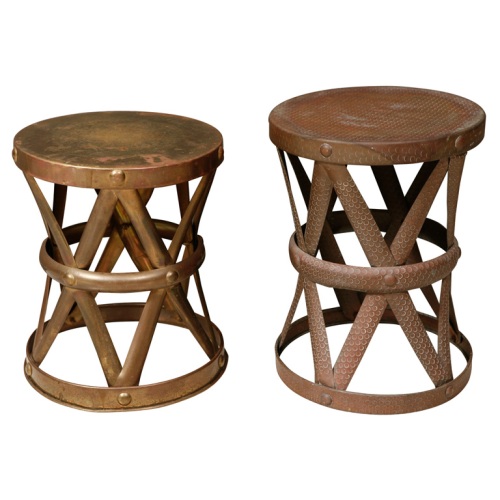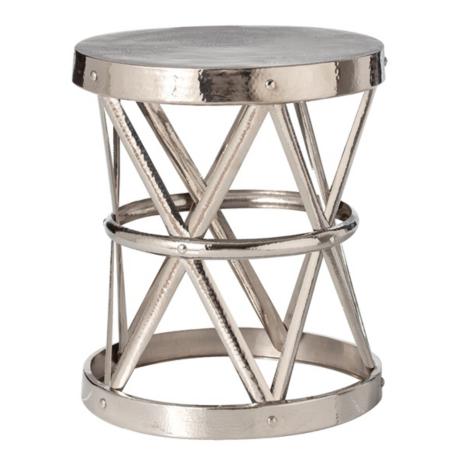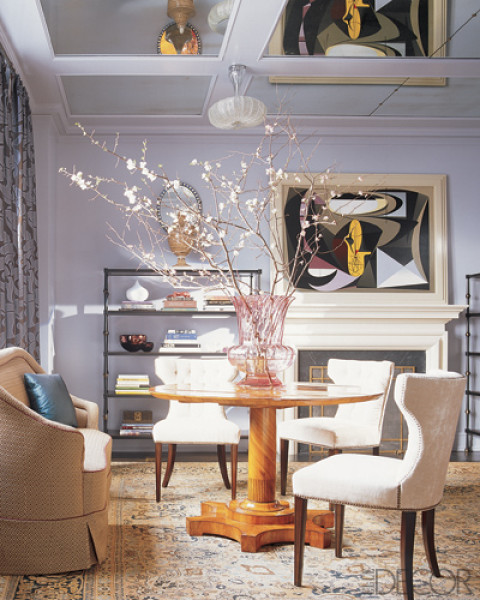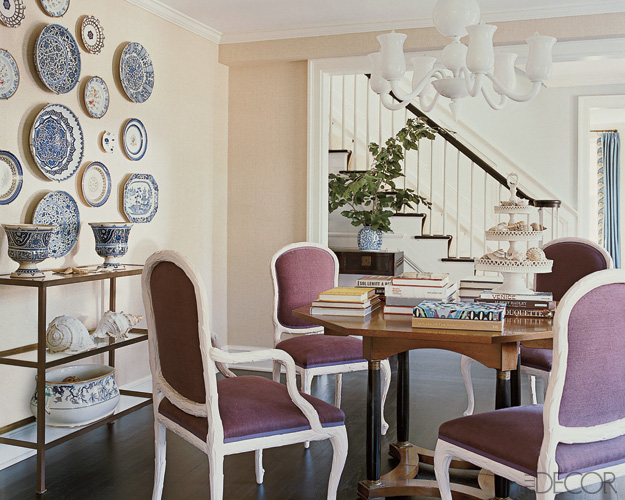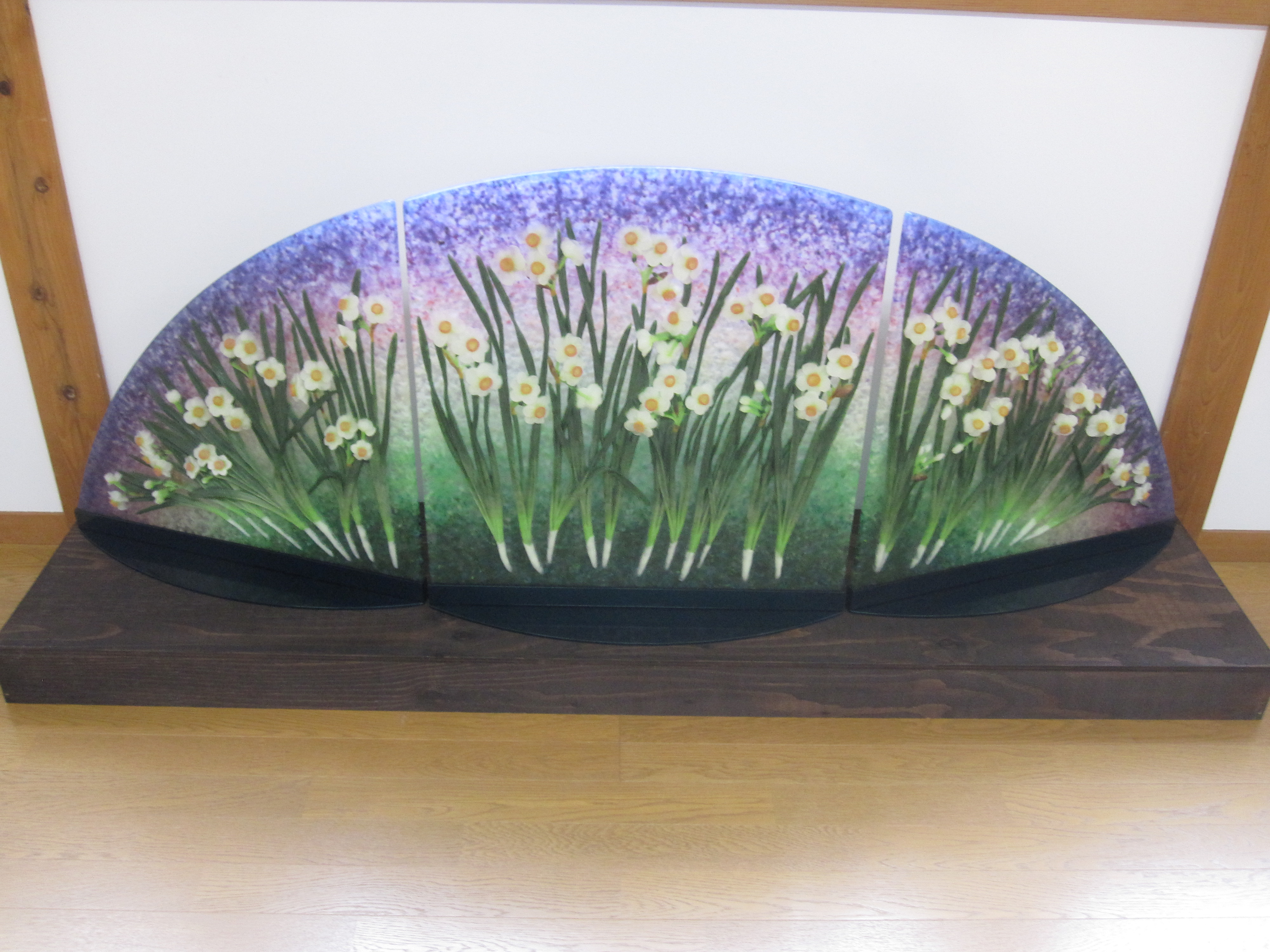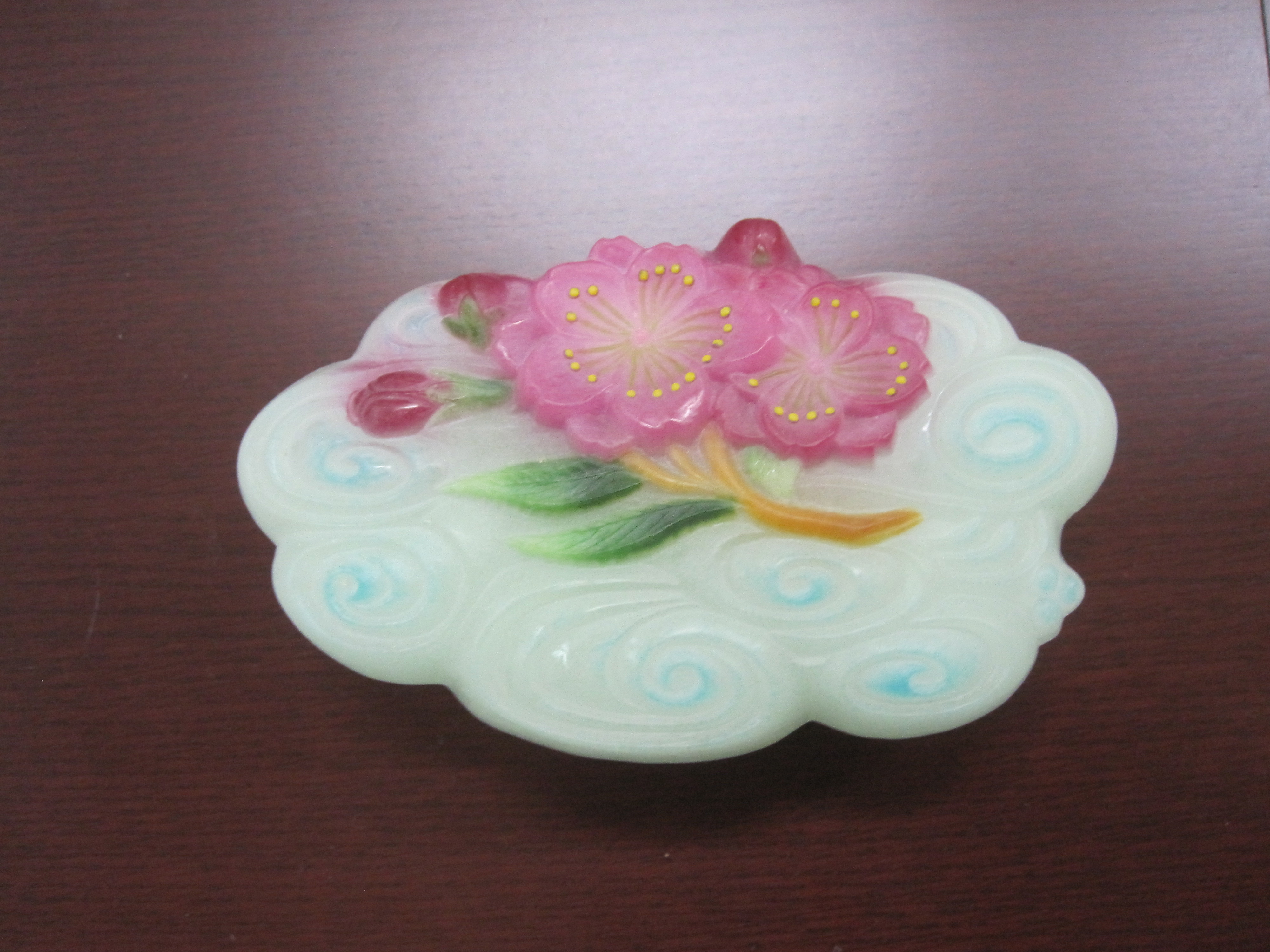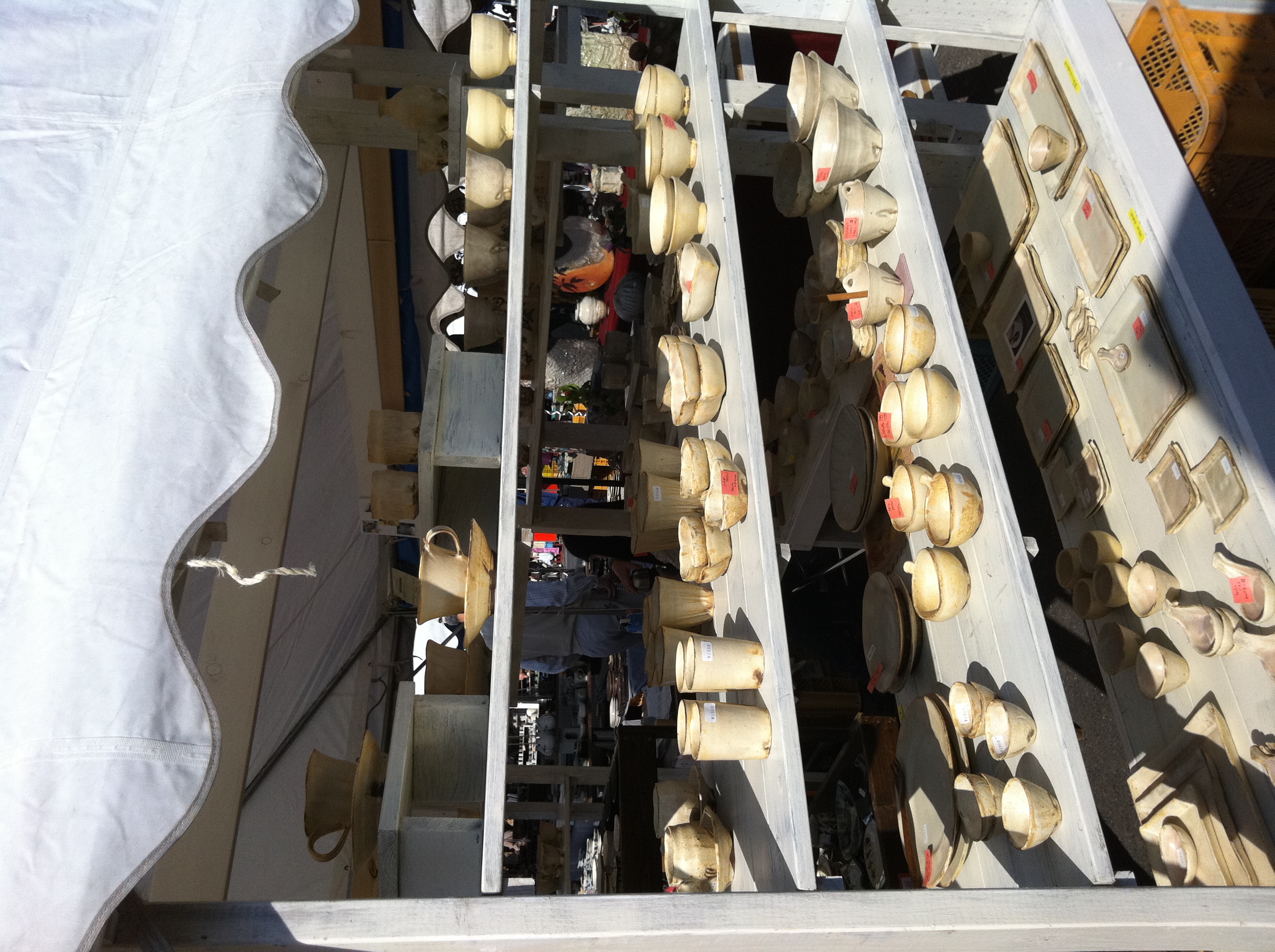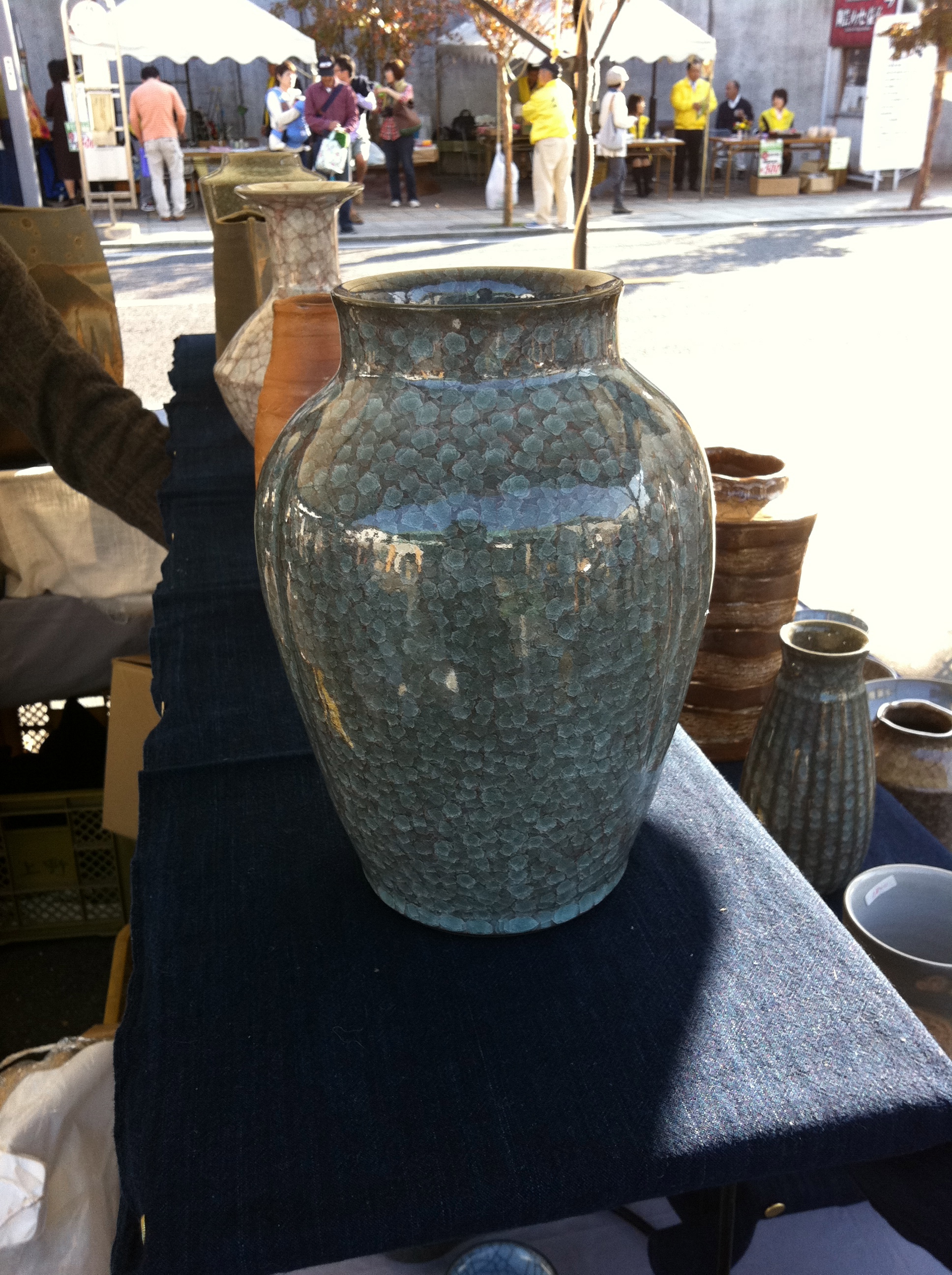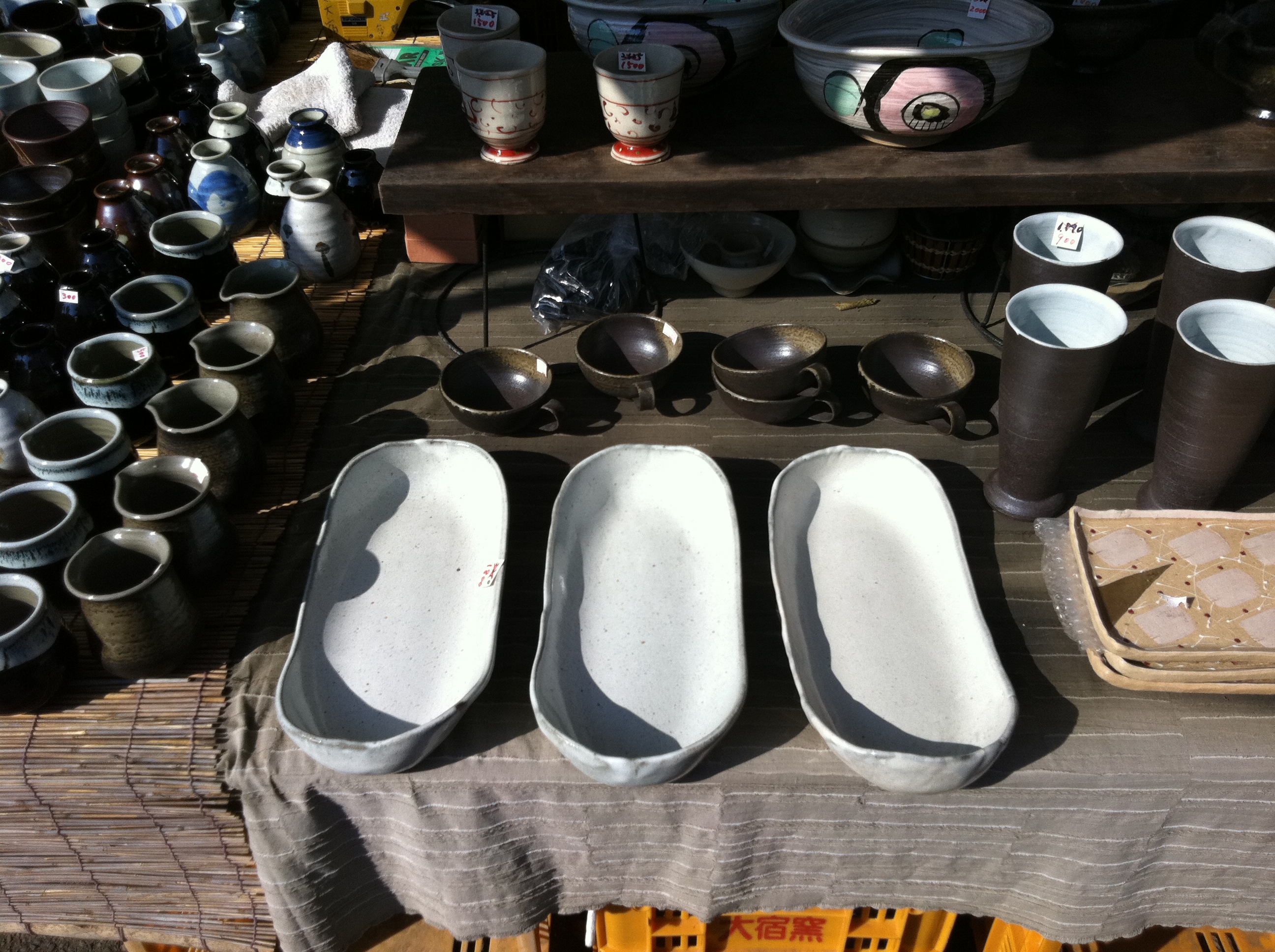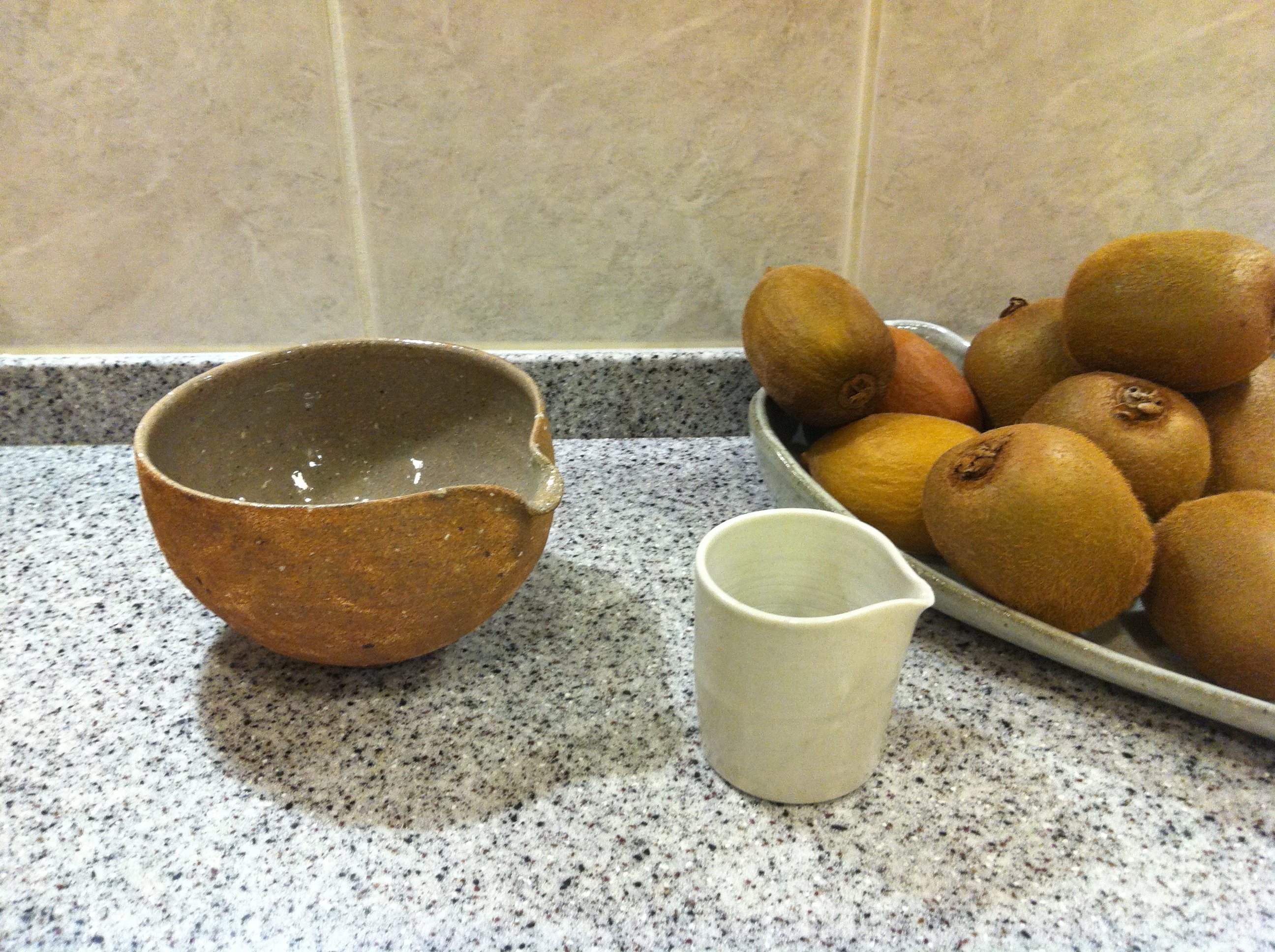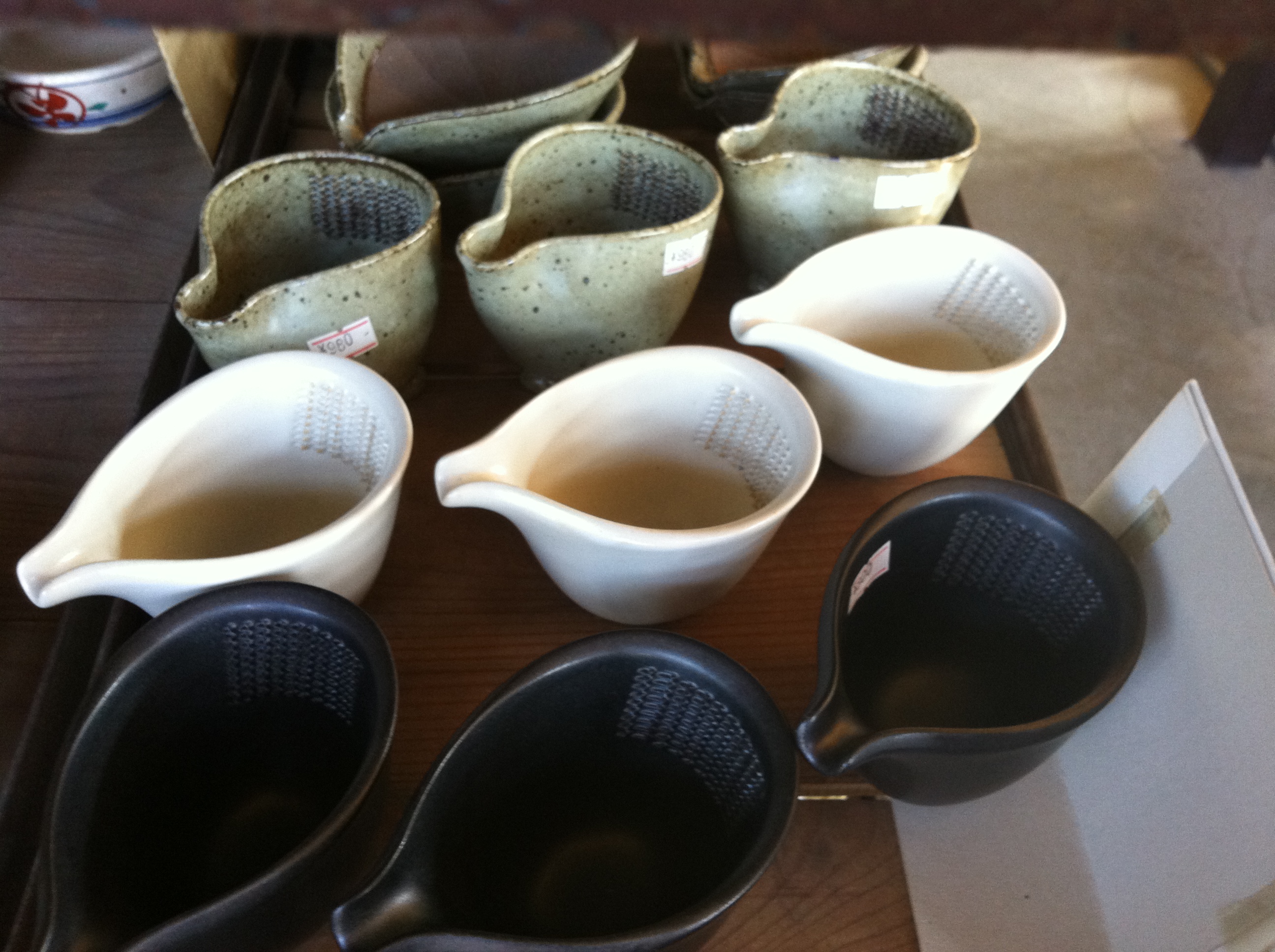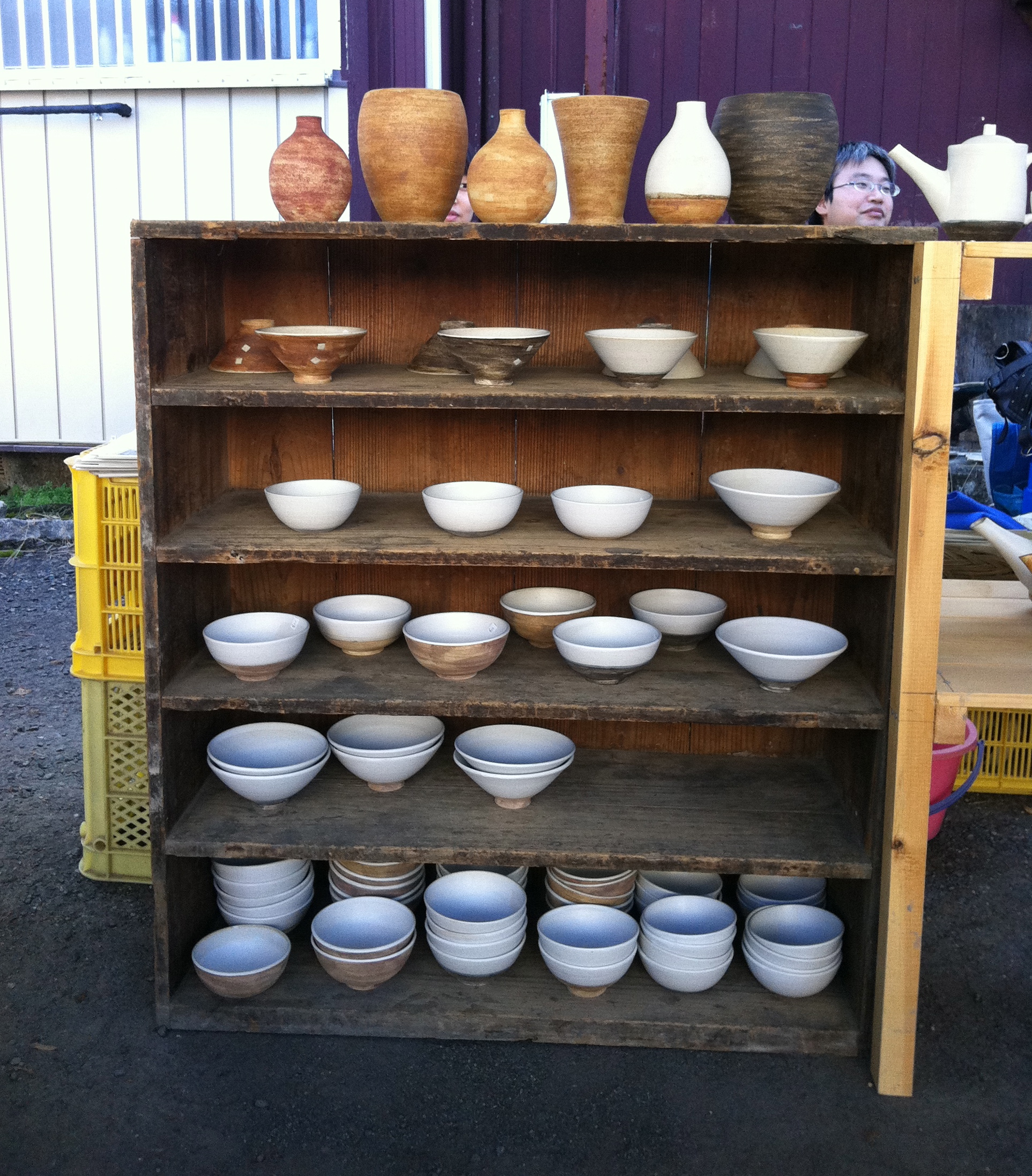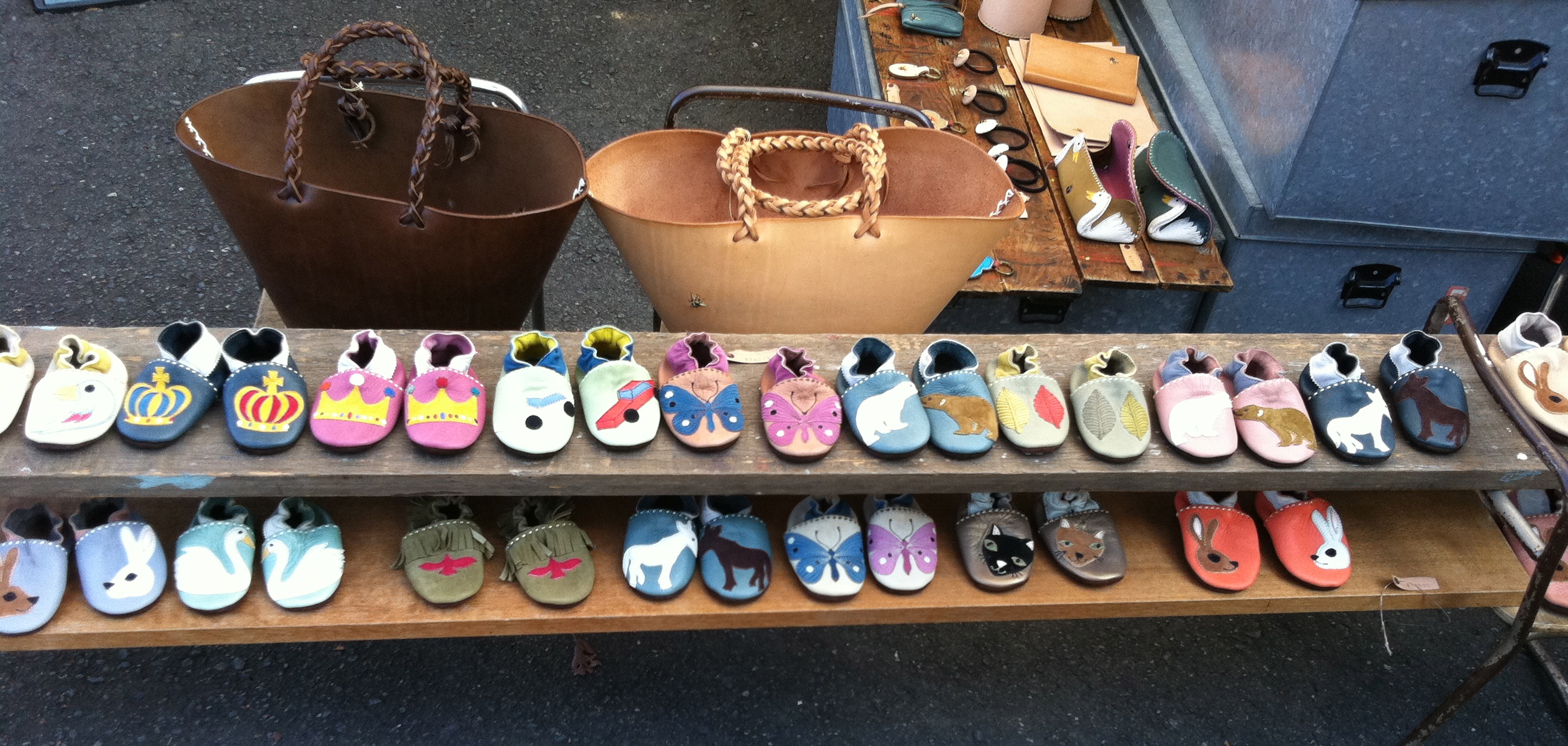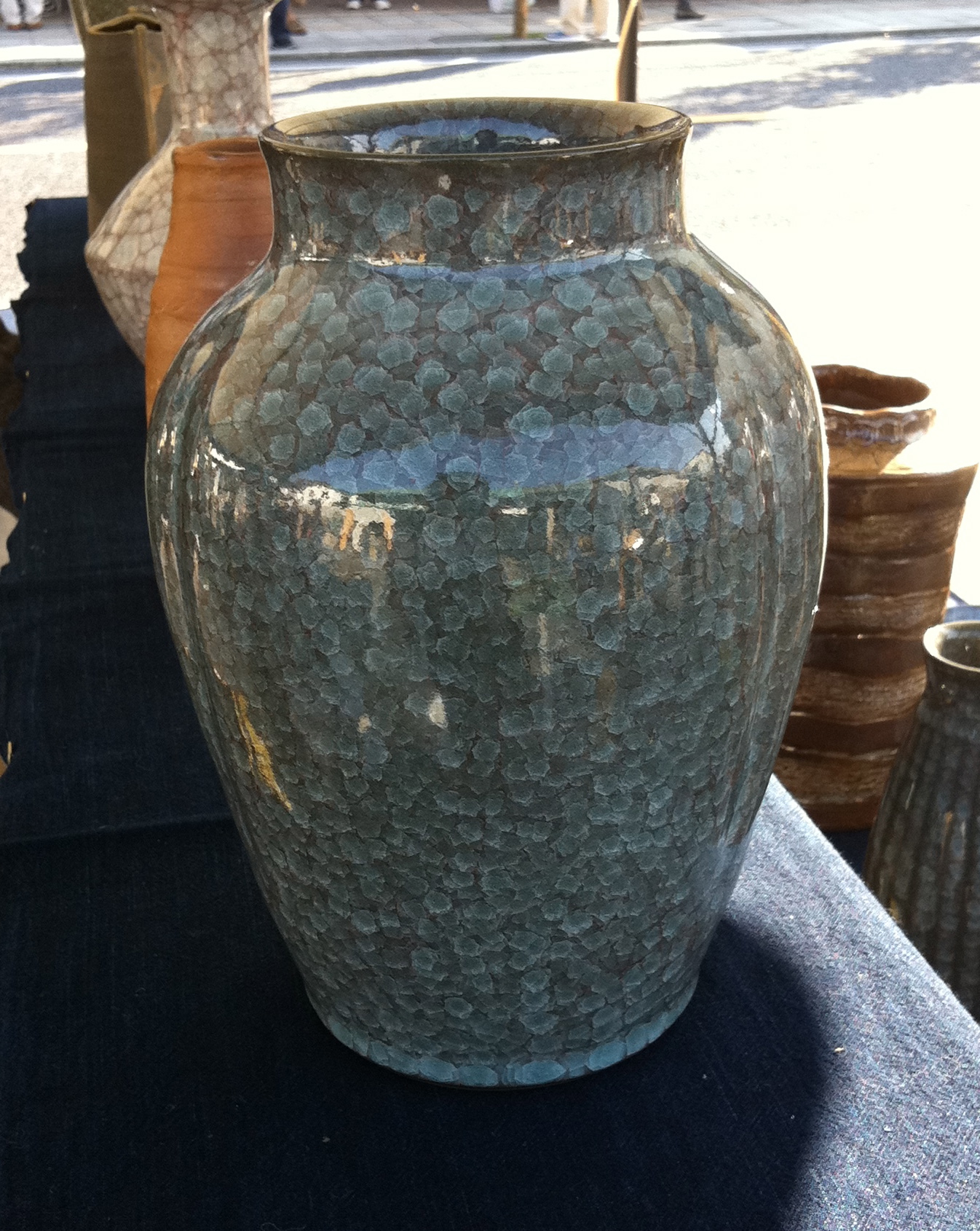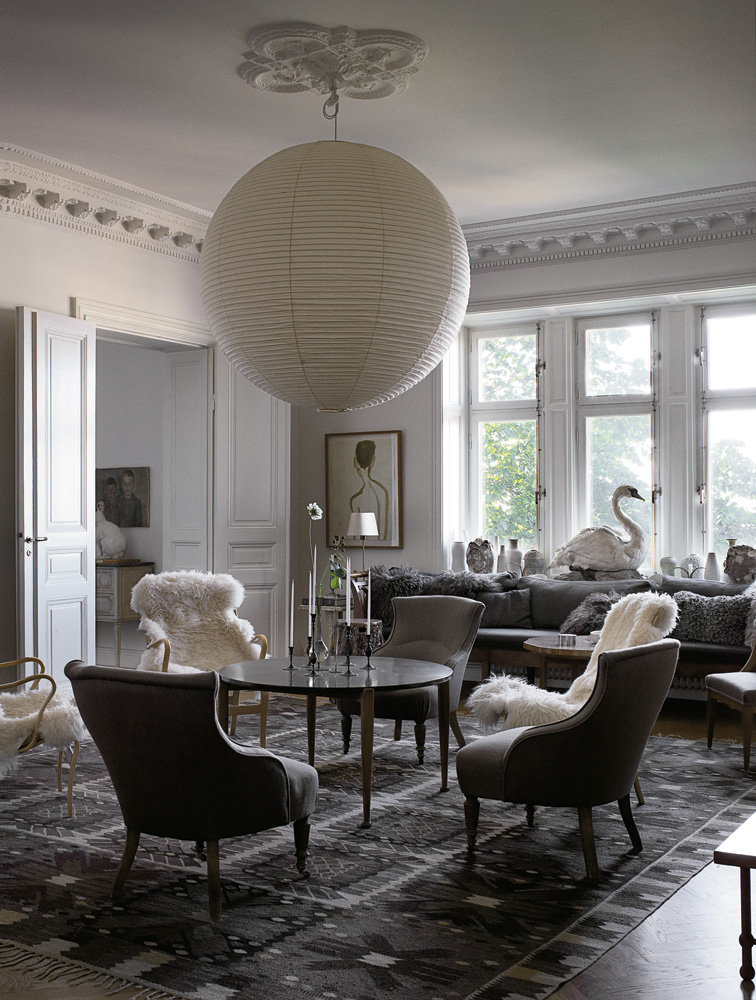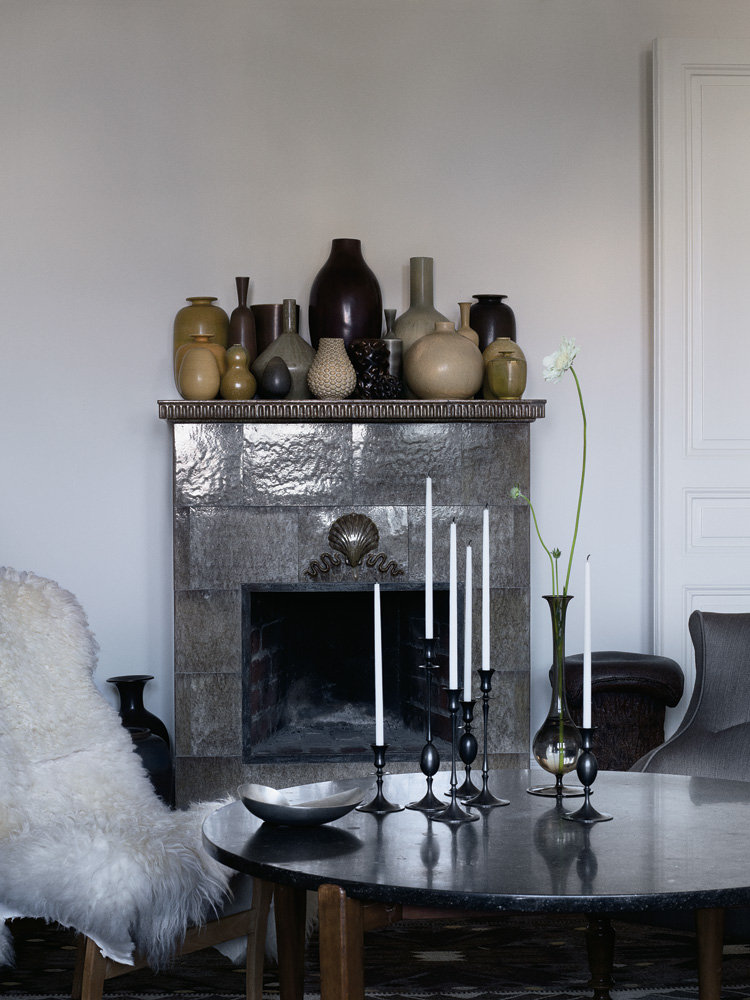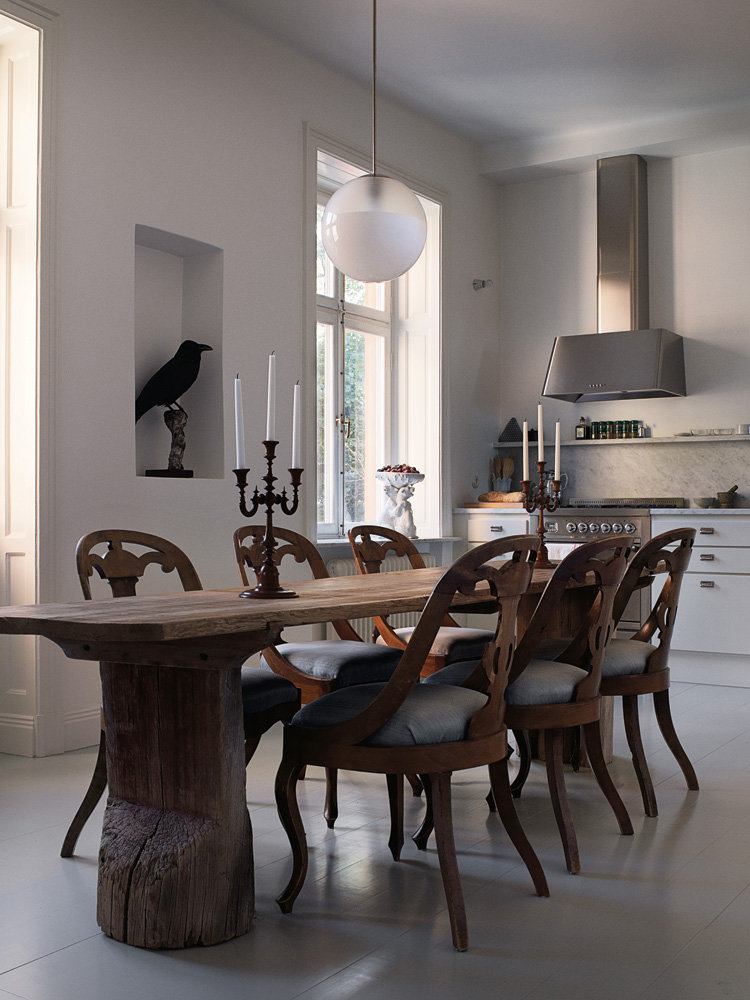Well, he is now cleaned up a bit and safely ensconced here in my living room, having become an extremely useful addition to our household, a perfect spot to rest a book or cup of tea and serving as extra seating in a party pinch.
This is a slightly different style of “Identify This” post as I am honestly the one looking for help figuring out the origins of this small brass stool or table. I had not seen one before mine, but this summer at Calypso Home in NYC they had a larger and brand new side table sized one in the shop. No one there had any insight into the history of its style.
I have only ever seen one featured in a home design spread.
(Addendum: On a funny note, it was only after I received the Katie Ridder book I wrote about in my last post that I realized I had just shown another photo featuring not one, but two of these stools in one of her interiors! There is a shiny brass one adjacent to each the chairs in the photo.)
So without much to go on, I dived in to my usual research sources…Currently, there are a few available on 1stdibs right now, including this one from Belvair…
and this pair from lawson-fenning. Both are simply identified as 1960s vintage brass drum stools or tables and are priced at $325-365 each.
Adam Bram Straus just had one for sale in his Tastemaker Tag Sale on OKL too. It and the one directly above on the left look the most like mine, although mine is in better condition than either of them and none have the repeated concentric circles on the seat/tabletop.
Less expensive new ones, which honestly have inferiors lines, seem readily available, like this one from Cyan Design for $247.
They even come in other finishes, such as aged bronze or this fancy polished nickel from Arteriors, the most expensive of the bunch at $458 for the small size and over $1000 for the side table size.
But I haven’t been able to find any additional information, or even proof that these are 1960s designs. One source suggested they are Italian, another art deco, but I don’t see any evidence of either, other than the usual problem in which someone wrote it on the internet once, so now everyone quotes it like it is true. For my eye, they have a real campaign furniture look, but as they don’t actually fold up or disassemble easily, that is not it either.
So I open it to you my readers – any theories or clues on origin, time period or even additional photos of these in use? I’d love any ideas, speculative or fact-based….And most of all, I wonder how it ended up in Japan?




